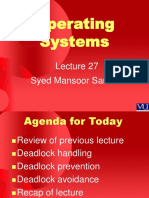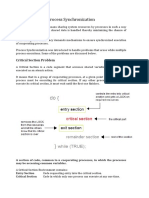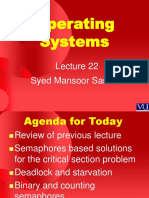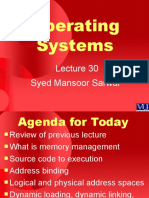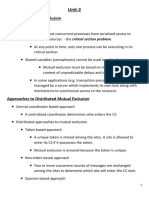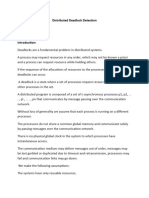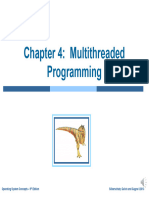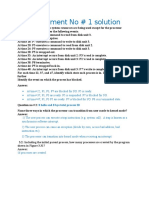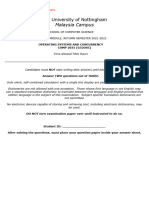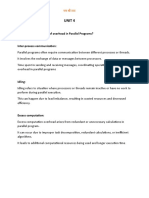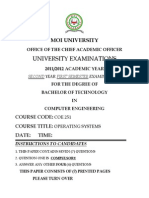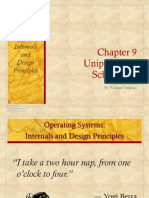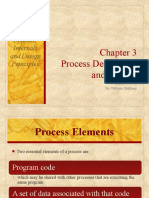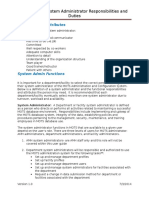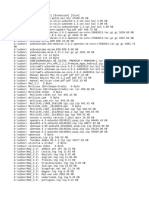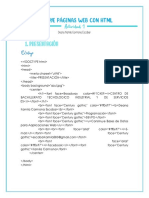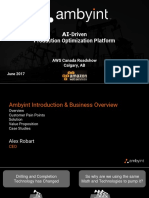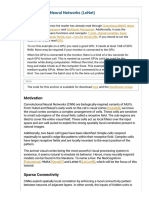100% found this document useful (1 vote)
216 views50 pagesCH 04-1 - OS8e-Process Description and Control
The document discusses process description and control in operating systems. It defines a process as an executing program with its own memory space and context. A process control block contains the process elements like its identifier, state, priority, memory pointers, and accounting information. It describes how the operating system manages multiple processes by switching the processor among them and keeping their states and contexts. Process states include running, ready, waiting and terminated. Reasons for process creation and termination are also outlined.
Uploaded by
Ian FadzilCopyright
© © All Rights Reserved
We take content rights seriously. If you suspect this is your content, claim it here.
Available Formats
Download as PDF, TXT or read online on Scribd
100% found this document useful (1 vote)
216 views50 pagesCH 04-1 - OS8e-Process Description and Control
The document discusses process description and control in operating systems. It defines a process as an executing program with its own memory space and context. A process control block contains the process elements like its identifier, state, priority, memory pointers, and accounting information. It describes how the operating system manages multiple processes by switching the processor among them and keeping their states and contexts. Process states include running, ready, waiting and terminated. Reasons for process creation and termination are also outlined.
Uploaded by
Ian FadzilCopyright
© © All Rights Reserved
We take content rights seriously. If you suspect this is your content, claim it here.
Available Formats
Download as PDF, TXT or read online on Scribd
/ 50







